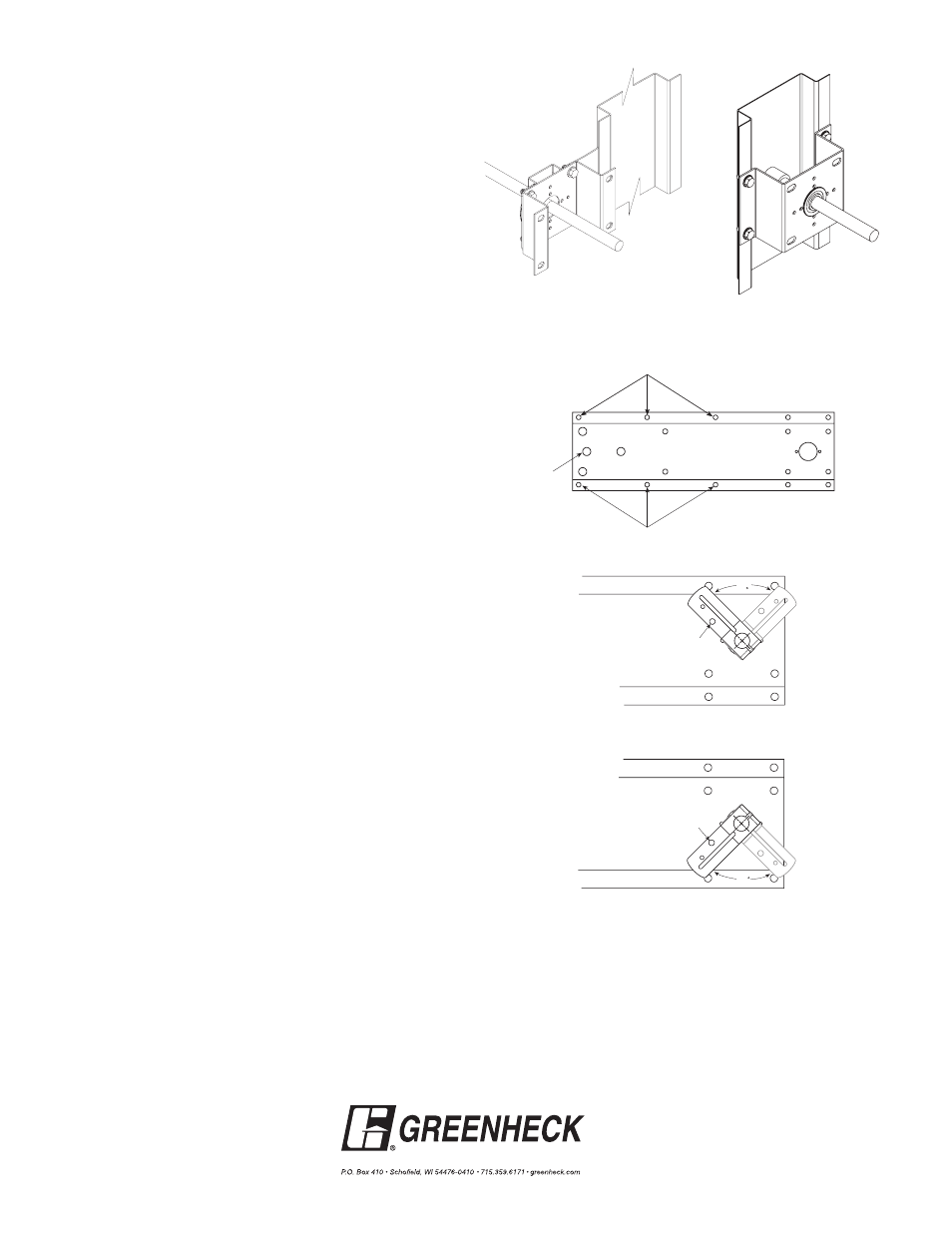Greenheck 331-2976, 332-2976 - Siemens 4 Actuator (454202) User Manual
Page 2

Instructions:
These installation instructions assume the damper is already
mounted in a duct or sleeve with the damper shaft extending
beyond the sleeve or duct 6 inches.
1. Install the stand off bracket.
Dampers with a jackshaft
1a. Mount the stand off bracket onto the jackshaft bracket
with (4)1/4 in.-20 X 1/2 in. thread cutting screws. Orient
the stand off bracket perpendicular to the damper on the
duct or sleeve so that the bracket's shaft hole is centered
on the jackshaft.
Dampers without a jackshaft (shaft extension)
1b. Mount the stand off bracket spanning across the damper
frame flanges. Orient the stand off bracket perpendicular
to the damper on the duct or sleeve so that the bracket's
shaft hole is centered on the jackshaft. Fasten to the
damper frame with (4) #14 Tek screws, supplied with this
kit. Be sure not to run the screws into the damper linkage,
which is between the flanges.
2. Attach the auxiliary bracket, part #17, to the mounting
bracket into two of the 6 holes labeled “B” at right, with (2)
#10 Tek screws supplied.
3. Mount the mounting bracket to the stand off bracket using
(4) 1/4 in.-20 x 1/2 in. bolts and (4) 1/4 in. - 20 Spinlock
nuts included with this kit. Use the outer four holes of the
mounting bracket for jackshafted models and the inner
four holes for directly driven models. Fasten the auxiliary
bracket to the duct using (2) #10 Tek screws provided.
4. If the damper shaft has a diameter of 1/2 in., mount the
roller bearing to the mounting plate using (2) #10 Tek
screws supplied. If the damper shaft is 1 in. in diameter
discard the roller bearing.
5. Assemble the mounting post, part #3, to the mounting
bracket, part #12, with the (2) 1/2 in.-20 hex nuts supplied.
Use the hole illustrated in “A” above.
6. Mount the actuator to the post using two E-rings supplied.
7. Note the damper shaft rotation for fail direction and orient
the linkage appropriately. Position the crankarm in one of
the positions shown to the
right.
note: All fail rotations refer to the damper shaft rotation
needed to achieve the desired blade fail postion. Inspect
the damper blades and the damper shaft to determine
the proper damper shaft rotation for the desired blade fail
position.
8. Attach the crankarm to the clevis on the actuator with
the clevis pin and the hitch pin supplied through hole “C”
shown above and to the right. For a 1/2 in. jackshaft, use
crankarm, part #5, and locate the clevis at the hole 2 3/4
in. from the center of the jackshaft. For a 1 in. jackshaft,
use the crankarm, part #6.
9. Run the supply pressure to the actuator and regulate it to
a maximum of 25 psi.
B
B
B
A
Orientation of Stand Off Bracket
for a directly driven damper
Orientation of Stand Off
Bracket for a jackshaft driven
damper
C
90
Fail
Power
C
90
Fail
Power
Crankarm Orientation for
Clockwise Fail Rotation
Crankarm Orientation for Counter
Clockwise Fail Rotation
10. Apply air pressure to the actuator. The damper
blades should fully open or close and return to the fail
position when power is disconnected; if they do not,
adjustments can be made by resetting the crankarm
position on the damper or actuator shaft or by changing
the distance from the actuator face to the center of the
hole in the clevis.
Copyright © 2006 Greenheck Fan Corporation
454202 Siemens #4 Rev. 6 October 2006
